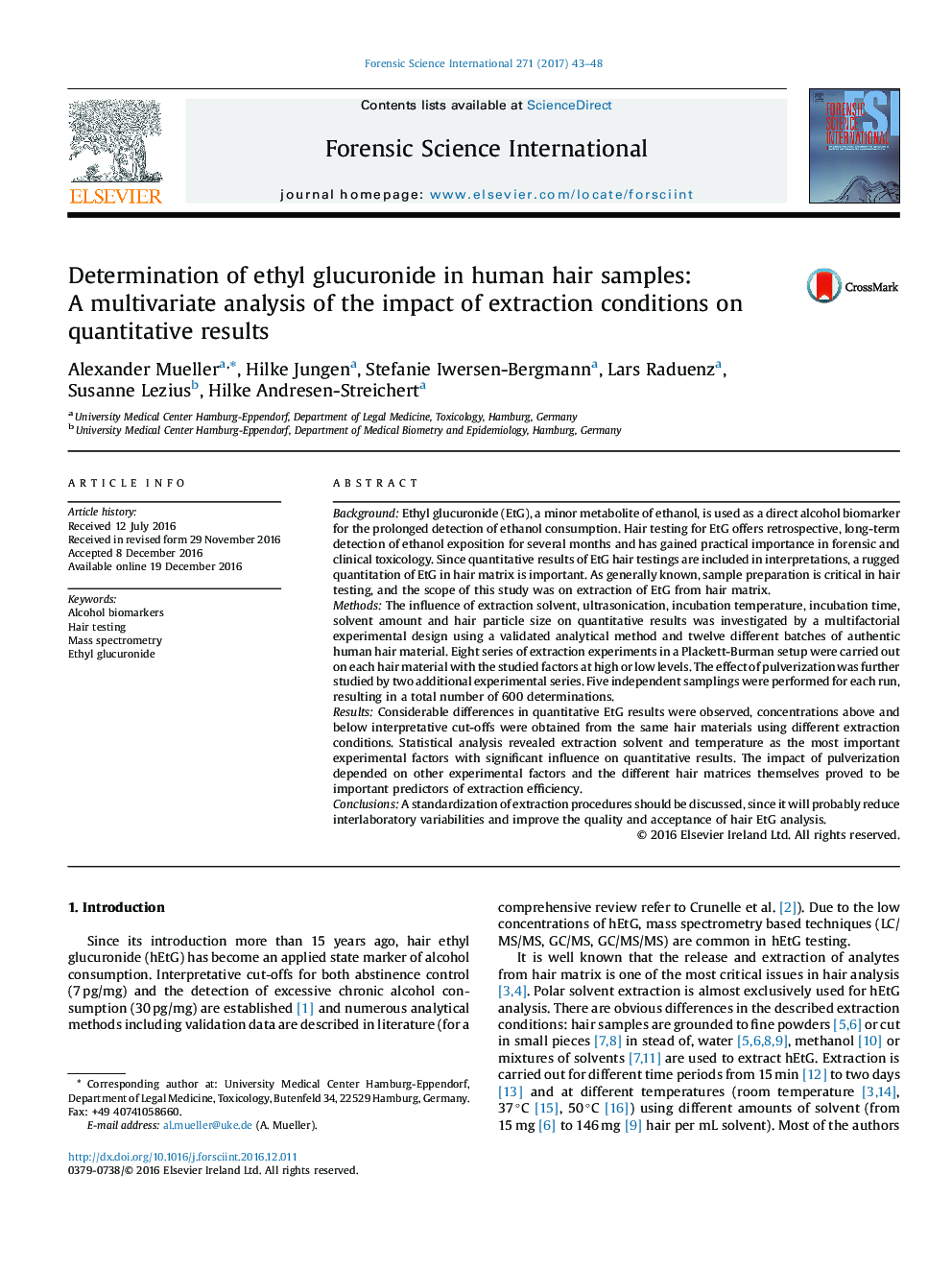| کد مقاله | کد نشریه | سال انتشار | مقاله انگلیسی | نسخه تمام متن |
|---|---|---|---|---|
| 6462039 | 1421979 | 2017 | 6 صفحه PDF | دانلود رایگان |
- There is a strong impact of extraction conditions on recovery of EtG from human hair.
- Six experimental factors are investigated using a chemometric approach.
- Extraction solvent and temperature are of superior importance.
- A harmonized extraction protocol should reduce interlaboratory variabilities
BackgroundEthyl glucuronide (EtG), a minor metabolite of ethanol, is used as a direct alcohol biomarker for the prolonged detection of ethanol consumption. Hair testing for EtG offers retrospective, long-term detection of ethanol exposition for several months and has gained practical importance in forensic and clinical toxicology. Since quantitative results of EtG hair testings are included in interpretations, a rugged quantitation of EtG in hair matrix is important. As generally known, sample preparation is critical in hair testing, and the scope of this study was on extraction of EtG from hair matrix.MethodsThe influence of extraction solvent, ultrasonication, incubation temperature, incubation time, solvent amount and hair particle size on quantitative results was investigated by a multifactorial experimental design using a validated analytical method and twelve different batches of authentic human hair material. Eight series of extraction experiments in a Plackett-Burman setup were carried out on each hair material with the studied factors at high or low levels. The effect of pulverization was further studied by two additional experimental series. Five independent samplings were performed for each run, resulting in a total number of 600 determinations.ResultsConsiderable differences in quantitative EtG results were observed, concentrations above and below interpretative cut-offs were obtained from the same hair materials using different extraction conditions. Statistical analysis revealed extraction solvent and temperature as the most important experimental factors with significant influence on quantitative results. The impact of pulverization depended on other experimental factors and the different hair matrices themselves proved to be important predictors of extraction efficiency.ConclusionsA standardization of extraction procedures should be discussed, since it will probably reduce interlaboratory variabilities and improve the quality and acceptance of hair EtG analysis.
Journal: Forensic Science International - Volume 271, February 2017, Pages 43-48
